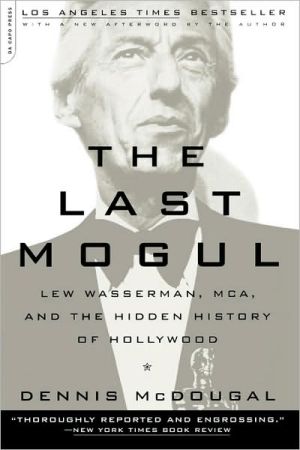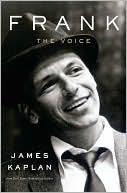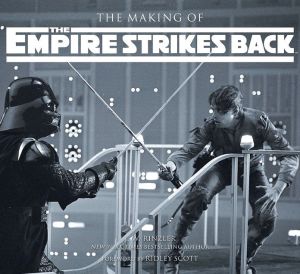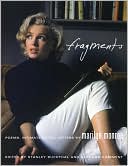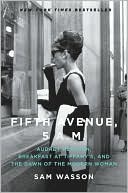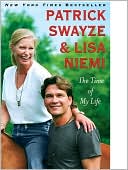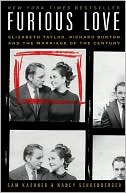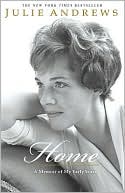The Last Mogul: Lew Wasserman, MCA, and the Hidden History of Hollywood
The reviewer of the Boston Globe said point blank: "Over the years, I've read hundreds of books on Hollywood and the movie business, and this one is right at the top." As the elusive, tyrannical head of the Music Corporation of America (MCA) until the 1990s, Lew Wasserman was the most powerful and feared man in show business for more than half a century. His career spanned the entire history of the movies, from the silent era to the present, and he was guru to Alfred Hitchcock, Marilyn...
Search in google:
Now in paperback-the Los Angeles Times best seller: the acclaimed and decidedly unauthorized portrait of the "Godfather of Hollywood" Ronald Grover . . . There's little that's new [in The Last Mogul], and McDougal, who never interviewed the press-shy Wasserman, relies heavily on other published accounts. -- Time Out New York
Chapter One \ South Bend and Chicago\ 1896-1924\ \ The man who created Lew Wasserman's beloved MCA—who, in fact, created Lew Wasserman — was born in 1896 in South Bend, Indiana. Julius Caesar Stein was the son of Lithuanian Jews who fled to Canada and then entered the United States in a wave of immigration that began in 1870 and didn't slow until the beginning of World War I.\ Persecution in America wasn't as violent as it had been in Europe, but in the Midwest during the first half of the twentieth century, Jews were cursed. Jews — especially working-class Jews like the Stein family — were labeled Christ-killers, hebes, kikes. Indiana, which may have the dubious distinction of having given birth to the Ku Klux Klan, was a particularly difficult place in which to grow up Jewish. Still, the Steins found the people of South Bend less bigoted than most.\ Louis Stein sold clothes, brooms, welcome mats, and other household items from Stein Dry Goods at the corner of West Washington Avenue and Walnut Street, just west of the well-to-do downtown area of South Bend. Their home was next door, where Louis and his wife, the former Rosa Cohen (nee Kahanaski), raised three boys and two girls. Theirs was an arranged marriage — comfortable but not romantic or particularly warm, even after nearly fifty years together. The daughter of a rabbi and martyred newspaper publisher who had fought the czar's oppression in the old country, Rosa grew to resent her husband's simple, uncultured ways.\ The Steins earned a living, but they were never rich. When Jules was four, Louis had to declare temporary bankruptcy after he was robbed of $4,010 during a business trip to Chicago. But he was an honorable and hardworking man. He paid his creditors and kept his store open. After several prosperous years, Rosa's buggy overturned in a freak accident three years after the birth of her last child. The horse kicked her, and she was paralyzed, wheelchair-bound for the rest of her life. Much of the Steins' income went to pay a full-time live-in servant and a Hungarian cook. But their neighbors were tolerant, and Louis and Rosa Stein never felt the urge to move. They lived out most of their lives in South Bend.\ Not so with their second son. Unlike his parents and his more complaisant older brother, Billy — who started out to become a lawyer but wound up selling ladies' ready-to-wear clothing — Jules Stein hungered to succeed.\ When he was eight, Rosa bought a mandolin and sixteen dollars' worth of lessons from a traveling salesman, and encouraged Jules to take up music. Three years later she bought him a violin. By the age of twelve, he played onstage between feature films at a downtown nickelodeon. At fifteen, Jules took up the saxophone and formed a six-piece neighborhood band that earned money playing at birthday parties.\ Louis Stein was less indulgent with his son than Rosa was. Deeply religious (he was the first president of South Bend's Hebrew Orthodox Congregation), Louis demanded perfection. Shortly after Jules entered high school, he built a table in wood shop and proudly took it home to display to his father. "What is this garbage?" asked Louis, who cruelly tossed his boy's handiwork out into the snow. Jules was crushed. But his father became merely the first in a long line of older male authority figures who underestimated Jules's resolve. Years later, as one of the wealthiest men in America, Jules finally responded in his own way to his father's cruel disdain by obsessively collecting fine English antiques until he owned the greatest collection of Queen Anne furniture in the world.\ Jules Stein was diminutive and thin, never athletic, but always a ladies' man. He stood five feet seven and weighed 140 pounds most of his life. Before he reached his mid-twenties, the thin black hair he parted in the middle of his high forehead had begun to recede. For several years early in his career, he sported a mustache, giving him the faintest resemblance to Charlie Chaplin. His brown eyes were as expressionless as his pursed mouth, revealing nothing of his secretive nature. But he could be a witty raconteur and carry on a conversation for hours if he liked someone ... or if he believed he could get something out of him.\ The usual adolescent preoccupations with sex, sports, and rebellion meant little to Jules. What intrigued him was success: getting beyond his Jewishness to become a power in upper-crust WASP society.\ In 1911 he left home and enrolled in a college prep course at the new Winona Academy in the Indiana farm country, 50 miles southeast of South Bend, operated by Billy Sunday, the celebrated Chicago Cub-turned-evangelist. In addition to music, Jules studied the evangelist's hellfire-and-brimstone sales techniques and watched with keen interest as tent show audiences ponied up their tithes. From Winona Academy, Stein went to the University of West Virginia in Morgantown, where he learned that his tuition would be paid if he played in the school band. In 1913, the same year that his future protege, Louis Wasserman, was born in Cleveland, the seventeen-year-old Stein moved on to the University of Chicago.\ Musically, the timing for his arrival in Chicago couldn't have been better. During World War I, Chicago became the capital of dance-hall ragtime. While still an undergraduate, Jules organized dance bands to defray living costs. One of his earliest gigs was playing backup fiddle to a busty young vaudevillian from Brooklyn named Mary Jane West. Stein remembered her, even in 1913, as "voluptuous." She was one of the first white performers he'd ever seen stand on stage and shimmy her ample bosom like a hot young soul singer. Mary Jane let Jules accompany her to the South Side black joints where she could study hootchy-kootchy technique up close, but she never dated her fiddle player. She was too old for him, she teased. For the next sixty years, long after she'd changed her name to Mae West, she reminded Stein often about his missed chance.\ In the years just prior to and during World War I, ragtime was in decline and a new kind of music was rising in Chicago. It was called jazz and it became synonymous with easy sex. When they shut down the New Orleans brothels where jazz was born, the pimps and whores moved north. So did the black musicians. And Chicago jazz was born.\ After Jules took his bachelor's degree in 1915, he quit college to earn enough money as a musician to go to medical school. In the fall of 1917 he entered the University of Chicago's Rush Medical School as a scholarship student.\ Meanwhile, Chicago entered the Roaring Twenties. Jules had nearly completed medical school when the Eighteenth Amendment banning alcohol became law. He and thousands of others marked the occasion on the night of January 15, 1920, by getting legally drunk for the last time. During the next decade, Chicago would become the hub of a national obsession with booze, blues, and big-money crime.\ Everyone paid cash in the music business because no one trusted anyone. It wasn't unusual for Stein and his associates to carry several thousand dollars.\ "Mr. Stein was friends with A1 Capone," said Charles Harris, Stein's butler and confidant for the final forty years of his life. "Four or five of his bands played Capone's speakeasies." Though he would learn from their tactics and make deals with the devils who ran the nightclubs and brothels, Jules Stein maintained that he was neither a gangster nor a down-and-dirty bluesman. Jules had worked too long and too hard to be recognized as anything other than a respectable professional man, and that was the image he cultivated, even though he was increasingly forced to deal with gangsters. He had stumbled upon the band-booking business purely by accident. Only after years of booking weddings and bar mitzvahs did he venture into the netherworld of nightclubs.\ Jules was never a great musician, but he had a head for organizing. He scheduled the gigs, negotiated the money, and paid each band member his share. One Saturday night while he was still an undergraduate, Jules mistakenly double-booked his band. Instead of canceling one gig, he found a second band and let them play the extra booking in exchange for paying him a 10 percent commission. That night Jules discovered the obvious: instead of organizing the band, rehearsing, paying the travel gas, blowing a saxophone, and bowing his fiddle for three or four hours, then divvying up the money five ways, Jules could earn almost as much by simply picking up the phone and scheduling some other band to do all the work.\ Despite this lucrative discovery, Jules resisted the lure of booking bands full time. He put up $5,000 and became partners with a pair of brash young music promoters, Fred Hamm and Ernie Young, who were to run the day-to-day operations of a partnership Stein called the Music Corporation. Hamm and Young also contributed $5,000 each, and the trio rented a dingy one-room office at 20 East Jackson Boulevard on the east side of the Loop for ten dollars a month.\ "Jules never liked to start a business by himself," said former MCA vice president Berle Adams, who later became a close Stein confidant. "He met with Ernie Young and said, `I'd like to use your offices. So what if I become your partner?' He'd decided that if he could take a band on the road, they could make money by booking the ballrooms in the vicinity of Chicago."\ Jules helped his partners, but he had loftier goals. He wanted to be a man of science, not a vaudevillian. Most of his grades were B's, but he was shrewd and fellow students recognized his exceptional focus and drive when he was still in his twenties. Printed below his picture in his 1921 college yearbook was a simple but dead-on summary of his personality: "He knows what is what."\ * * *\ In 1921, Jules graduated from medical school. He went to Europe the following year to study at the University of Vienna. When he returned to Chicago, he landed an appointment as chief resident at Cook County Hospital, where he set a record for performing the most tonsillectomies in a single day. But when he tried the next logical step in his medical career — postgraduate study in ophthalmology at Harvard or Johns Hopkins — he was turned down. He didn't have enough credits in organic chemistry, he was told. As a consolation prize, he accepted an apprenticeship with Dr. Harry S. Gradle, a highly regarded eye surgeon who practiced in downtown Chicago and lived in Highland Park, one of the tonier suburbs 26 miles north of the city. Stein was well on his way toward a brilliant medical career.\ His older brother, meanwhile, was well on his way to oblivion. A failure as a lawyer, Bill Stein floundered in business and seduced as many women as he could fit between his sheets. In addition, in 1925 he was diagnosed with rheumatic heart disease, a condition that would ruin his health and plague him for the rest of his life. "Jules was working for Dr. Gradle, and he had a fine position and he had no reason to leave the business, but he told me he had to find something for Bill to do," said Berle Adams.\ Stein tried to turn Bill into a band booker, but his brother just didn't have the drive or talent. Jules was on the phone as much or more than Bill, cajoling roadhouse owners, nightclub managers, and wedding party coordinators into taking this band or that. "I'd have a patient in front of me, fitting him for eyeglasses, and I'd get a call," Stein recalled years later. Dr. Stein the ophthalmologist would adjust his patient's lenses while J. C. Stein the booker would whisper into the receiver: "Book the band in Lafayette!" As an agent and doctor, his life had become schizoid. Within a year, J. C. Stein the agent was earning ten times what Dr. Jules Stein did practicing medicine. J.C. signed up for a three-year correspondence course in business while Dr. Stein kept pace with the current literature on ophthalmology. The double life, however, could not continue indefinitely.\ The Stein brothers called themselves the Kenneworth Music Company and shared office space in the Garrick Theater Building with the man who would later become Stein's first partner, Ernie Young. Jules dreamed of going head-to-head with Edgar Benson, Chicago's most successful music agent. He was the chief booker for the "sweet" bands that steered clear of honky-tonk and stuck to slower tempos. Benson often took one-third or more of the bands' earnings as his commission, so Jules undercut him by offering the same service for 10 percent on a weekly booking and 20 percent for a one-night stand.\ The first band Jules sent on the road was King Joe Oliver's Creole Jazz Band, at a royal nightly guarantee of $125. Oliver was an unusual choice because he and his musicians — including a young cornet player named Louis Armstrong — were black. Most of the early 1920s "sweet" bands that Stein represented were the white orchestras that midwestern dance-hall owners and their top-dollar audiences demanded.\ Stein needed one more ingredient to put the Stein brothers' agency ahead of the pack: broadcasting. On October 27, 1920, Westinghouse Electric established Pittsburgh's KDKA as the first commercial radio station in the nation. Three years later every major city had its own station. Stein first heard bands playing over the radio out of Kansas City, Missouri, via radio station WDAF. Crystal sets were selling off the shelf. By 1924 the biggest problem facing new station owners was how to fill the airwaves with cheap round-the-clock programming to cash in on this new audience. One solution was to find a nightclub with a slick-sounding band and stick a microphone in front of the musicians.\ In Kansas City in the mid-1920s, that band became the Coon Sanders Orchestra, led jointly by snare drummer Carlton Coon and pianist Joe Sanders. They were nicknamed the Kansas City Night Hawks because their music originated from the ballroom of the Muehlbach Hotel in downtown Kansas City each evening at midnight.\ What followed was an hour of the Coon Sanders Orchestra's clean, straightahead, commercial white jazz. The musicians had no idea how popular the new medium of radio had made them, but Stein did. "They didn't know who I was when they played a roadhouse called the Lincoln Tavern [near Chicago] in 1924," Jules said years later. "But I pestered them to go on a tour of one-night stands. They finally said, `Okay, if you pay us $10,000.' I didn't have the $10,000. I went back to them and said, `I'll give you $2,000 when you sign the contract and the rest when you go on tour.'"\ Stein didn't have $2,000, let alone $10,000, so he had to work fast. He was betting that young people in every town from Kansas City to Chicago had heard the midnight broadcasts from the Muehlbach, just as Stein had, and dance-hall owners would pay just about anything to have the band in person. "My trick was to ask for 50 percent in advance when I booked them," Stein recalled. Thus he was able to pay off the band before they even played a note, and still collect the other half of the booking fee as pure profit once the gig was over. At the end of thirty days, he had earned $10,000, and the Coon Sanders Orchestra was ready to go anywhere Stein suggested. Despite his overwhelming success, Jules couldn't interest Ernie Young in coming in as his partner. "Ernie Young said, `I want no part of it. I've got my own business and it's very good,'" Stein recalled.\ That may have been the first time a business associate failed to appreciate the vision of Jules Stein. Stein and Young were an odd couple anyway. Fresh from a background of buttoned-down academe, Stein recoiled whenever Young bounded into the office like P. T. Barnum. Jules patterned himself after the young brokers who worked at the Chicago Stock Exchange: Oxford gray suits, crisp white shirts, and black ties became his uniform and that of everyone who worked for him. In Jules's estimation, a businessman's appearance was at least as important as his speech or behavior. If an agent dressed like a professional, Stein reasoned, he would be trusted as a professional. If he dressed like a clown, that's how clients would treat him.\ But Ernie Young did have something Jules wanted. Young listed his businesses under several names in the trade magazine Billboard, and one of those names was Music Corporation of America — an elongated version of the partnership name that Young, Stein, and Fred Hamm had used. It was grandiose, even arrogant, but it was a name that Jules believed he could turn into cash during those early days of recorded music and radio, when David Sarnoff's hugely successful — and similarly named — Radio Corporation of America was just beginning to take the nation by storm.\ Young told Stein if he paid him the $10,000 that Young and Hamm had originally invested, the Stein brothers could have the name. Jules forked over the $10,000 he'd earned on the first Coon Sanders tour, and the Music Corporation of America was born.\ It was a corporation in name only. It became the real thing on May 24, 1924, when Stein hired a pair of Chicago lawyers to incorporate. In the articles of incorporation, he gave four reasons for going into business:\ 1. To carry on the business of providing, furnishing, arranging, and presenting public or private entertainments, exhibitions, concerts, and musical organizations of all kinds.\ 2. To provide, furnish, engage, and employ musicians and musical artists, orchestras, bands, and entertainers.\ 3. To buy, sell, lease, hold, own, and operate dance halls, amusements, enterprises, music halls, restaurants, cafes, and other places of public amusement, refreshment, and entertainment.\ 4. To buy, sell, trade in, and deal in musical instruments, music, and supplies and any and all other merchandise of whatsoever kind, nature, or description.\ In the blank marked "Duration of the corporation," Jules filled in the word "perpetual." He named Bill and his own employer, Dr. Harry S. Gradle, as members of MCA's first board of directors, issuing them two shares each of MCA's initial 4,000 shares of stock. Jules held 196 shares, worth $5 each, and left the remaining 3,800 shares in the corporation.\ * * *\ Jules and his brother continued to share office space with Ernie Young, but the Music Corporation of America — or MCA, as it came to be known — operated independently.\ Needing a partner as hungry as he was, Stein found one in a twenty-two-year-old medical student from the University of Illinois who gave up hope of a medical career when he failed German. In frustration, Billy Goodheart Jr. quit college and hooked up with "Doc" Stein, as Jules had come to be known in Chicago's dance halls and speakeasies. Billy Goodheart was six years younger than Jules, but due to a spinal condition, he was several inches shorter than Stein and looked older. Jules was thin and poised while Goodheart was built like a barrel. Goodheart was gruff, coarse, and loud whereas Jules was steely, soft-spoken, and cultured to the point of pretension. Jules liked to show off his money; Goodheart liked to show off his power. Jules believed in the accumulation of wealth; Goodheart believed in the accumulation of experience. Jules was a man of analysis; Billy Goodheart was a man of action.\ They both loved the pursuit of the deal. They went at it with totally different styles, but Stein and Goodheart were equals at driving a hard bargain and telling as many versions of the truth as necessary to close a sale. On paper, Billy Stein remained an equal partner of Music Corporation of America, but Jules Stein's real partner at the birth of MCA was another Billy — and Billy Goodheart would remain Stein's equal for nearly twenty years.\ * * *\ The Stationery Stein ordered for his new company featured a pencil sketch of the globe at the top center of the sheet with the North American continent featured prominently. Below the globe were the first three verses of "My Country, 'Tis of Thee" and the address of the new MCA offices, located in a two-room rented office next door to the Chicago Theater at 159 North State Street.\ Jules remained ambivalent about the business. He wanted both the money that band booking offered and the prestige of being a man of medicine. He still went into Gradle's office every day. He wrote a well-received scientific paper that was reprinted by Zeiss Optical Company as an instructional manual for optometrists.\ Chiefly through Billy Goodheart's efforts, MCA held its own, but competition remained cutthroat. One of MCA's innovations was band rotation — a simple idea that no one had exploited successfully until Goodheart and Stein. After Coon Sanders had played the Muehlbach Hotel for a while, Jules wanted to send them on the road to cash in on their new fame, but that left the Muehlbach without an orchestra. So Stein sent in Eddie Niebahr and his Seattle Harmony Kings, one of the bands MCA regularly booked on one-night stands around Chicago. This type of rotation worked well. Hotels liked it because guests always had fresh music, and bands liked it because the money was good and MCA took care of travel, lodging, meals, and publicity.\ The only opposition came from unions, which didn't appreciate out-of-town musicians taking away their business. MCA orchestras had to deal with occasional threats, stink bombs, and hotel workers' strikes. When a union sought to fine Stein for booking nonunion talent in a Chinese restaurant called the Canton Tea Gardens, Jules refused to pay. Two days later the restaurant was bombed.\ Unions were MCA's bane, with one notable exception. For years Stein proudly boasted that he held the number one charter membership in the Chicago local of the American Federation of Musicians. For a time he sat on the union's administrative council and attended its annual conventions. He kept up his dues and held on to his working musician's status long after he quit playing his violin. While he might have had to fight off union goons in Kansas City or Cleveland, Stein knew how to buy labor peace in Chicago: befriend the head man and keep him happy.\ The head man was James Caesar Petrillo, the son of a West Side sewer digger. Petrillo, who had dropped out of school in the fourth grade, mangled the English language in a grating voice reminiscent of Jimmy Durante. Like many union leaders, he maintained his power through a combination of threats and promises to both recalcitrant club owners and dissident musicians. He eventually defeated the rival musicians' unions and, with the backing of the Mob, became the music czar of Chicago.\ As Petrillo's power base spread across the country, MCA's rotating bands also moved to all corners of America. The symbiotic relationship between the AFM and MCA grew tighter. Petrillo granted MCA special dispensation that turned the band-booking agency into a Big Band supermarket. Musicians and rival bookers cried foul, alleging that Stein must have bribed Petrillo for his favor, but no one was ever able to prove anything more between the two than friendship.\ Unlike any other band booker, Stein could demand that his orchestras deliver $1 million in commissions to MCA before he allowed them out of their contracts. Some bandleaders, like Tommy Dorsey and Benny Goodman, later complained bitterly that Stein had the same power over musicians that a plantation owner had over his slaves, because a band was forced to work only for MCA until it earned $10 million — an unimaginable figure. Eventually, even Petrillo had to recognize the inequity and ordered the $1 million contract banned.\ "They make me so mad I could cut their throats, but I've got to play ball with them," Dorsey said. Like every other MCA bandleader, Dorsey had to pay his own expenses after delivering MCA its commission, and he had to play when and where MCA told him to play. More than once he tried to fight back. Once, Dorsey even showed up in Goodheart's office with his lawyer. Billy was waiting for him. The agent sat on the edge of his desk, stopping them dead before either of them could open their mouths. "Tommy, if you continue this bullshit, making everybody miserable, you see these balls?" — at which point he grabbed his own scrotum — "I'm gonna cut yours off. Not only won't you be working for MCA, you won't be working for anybody else for maybe the rest of your life. You have something to say, put it in writing. Now get the fuck out of here. You irritate me."\ The exclusive contract became both a lure and a weapon: if an orchestra signed with MCA, it was guaranteed work. But if the bandleader crossed Stein, the shrewd ophthalmologist with the owlish stare and pursed lips could punish the band by withholding bookings, sending the musicians on grueling road tours, or relegating them to some backwater dance hall. And the bandleaders could do nothing about it. The contracts were perfectly legal. Only five orchestras ever earned their way out of an MCA contract: Goodman, Dorsey, Guy Lombardo, Ted Fiorito, and Horace Heidt. Every other band worked exclusively for MCA — or it didn't work at all.\ \ \ Chapter Two\ Chicago\ 1925-1928\ \ MCA's first trade journal ad was a full page in Billboard magazine on May 15, 1926, proclaiming the agency to be the originator of "The Circuit of Orchestras." Whether the boast was true or not, Stein and Goodheart listed twelve of the Midwest's top bands as clients:\ \ \ MAKE YOUR DANCES PAY THROUGH THE MCA\ \ \ COON SANDERS\ \ ZEZ CONFREY\ \ \ TED WEEMS\ \ CHARLIE STRAIGHT\ \ \ JACK CRAWFORD\ \ ROSS REYNOLDS\ \ \ ISHAM JONES\ \ BENNY KRUEGER\ \ \ DON BESTOR\ \ CARL FENTON\ \ \ EARL HOFFMAN\ \ EGYPTIAN SERENADERS\ \ \ Available for single engagements anywhere—guarantee and percentage basis. Guaranteed recognized novelty entertaining orchestras in units of eight on weekly charge at $600 per week. Daily circuit as low as $100 per engagement. Attractive advertising free with all orchestras. Special service for summer pavilions and resorts\ (one sheets-window cards-heralds-newspaper\ stories-cuts-photographs-tickets-et cetera)\ \ One of the first long-term Chicago bookings that MCA landed for the Kansas City Night Hawks was, appropriately, the Blackhawk Restaurant, located beneath the El at the corner of Randolph Street and Wabash Avenue. Owned by Otto Roth and run by a gruff maitre d' named Tully, the Blackhawk was a steak house turned nightclub, complete with floor show. During the Roaring Twenties it was one of the finer places to drink and gamble along Chicago's version of Tin Pan Alley. Roth liked Coon Sanders so much that he signed the band to an exclusive contract. Each time the musicians tried to move on, he persuaded them to stay. Their contract had a time limit, but contracts meant little if the club owner had any pull with — or acted as a front for — the Mob.\ Louis Armstrong himself crossed a mobster by trying to leave a Chicago club once his engagement was over, just as his contract stipulated. He was told he wasn't going anywhere. He was packing them in, and the club owner ordered him to extend his stay. Armstrong wound up on the run, hiding out in New Orleans for a while and then playing jazz clubs in Europe for a couple of years until things cooled down. His longtime manager, Joe Glaser, who joined MCA briefly during the early 1930s before starting Associated Booking, told Satchmo he'd wind up dead if he tried playing anywhere in the United States. Coon Sanders wanted to go to New York, but remained a Blackhawk headliner for six years, with MCA collecting its percentage of every dime earned. MCA no longer just booked bands; it owned them and told them when and where to play.\ Stein still wasn't satisfied. He saw more money to be made via radio. Chicago's version of WDAF was WGN, the radio arm of Colonel Robert McCormick's Chicago Tribune empire. Simultaneously with their opening at the Blackhawk, the Kansas City Night Hawks became Chicago's Coon Sanders Orchestra and WGN took over live broadcasting chores. Monday night became Night Hawk night on WGN. Eventually the station began a nationwide hookup with other stations, giving the Blackhawk's house band national network exposure. Stein saw no reason to give that kind of exposure away. For the next twenty years the Blackhawk Restaurant was famous for its evening broadcasts and WGN radio never missed a chance to plug the Chicago Tribune ("World's Greatest Newspaper"). Soon Coon Sanders began plugging other products, too, and Jules Stein made certain that MCA collected its share of the plug fees and other advertising revenues.\ MCA signed most of the important white Chicago bands, including Wayne King, who took over the ritzy Aragon Ballroom about 1927, and Charlie Straight, whose ten-piece band played in a style that he later called the forerunner of swing. Ted Weems, another MCA client, became the nation's first million-selling recording star with his rendition of "Somebody Stole My Gal."\ * * *\ Harry Gradle was irritated. His assistant had turned thirty years old and still hadn't made up his mind. Was Jules going to be an ophthalmologist or an agent? Since MCA had moved to larger quarters, in an office building at 32 West Randolph Street, just a block from the Blackhawk Restaurant, Jules was spending less time at Gradle's office.\ In addition to "Music Corporation of America," Jules was also calling his company the American Music Corporation so that its listing would be first in the Yellow Pages. MCA was growing. To handle the ever-increasing number of bands, Jules hired a publicist named Karl F. Kramer, a twenty-six-year-old from Detroit with a head for numbers and a knack for hype. He also hired an office boy named Bernard Taft Schreiber, a nineteen-year-old saxophonist and part-time shoe salesman from Waukegan.\ Jules also brought in a couple of new agents to help Billy Goodheart sell the bands. By now Bill Stein had become more of a talent scout than a booker, touring clubs all over the Midwest in search of new orchestras. Goodheart needed help in finding places for the new talent to play.\ Stein studied his rivals and identified the ones who were giving him the most serious competition. In Chicago it was a young piano player named Maurie Lipsey and an orchestra leader named Ray O'Hara. Like the Stein brothers and Goodheart, Lipsey and O'Hara first teamed up on the bandstand, but discovered it was far more lucrative to book the bands. In that business, the Lipsey-O'Hara Agency had an ethnicity edge: Maurie booked the bar mitzvahs and Ray took care of the Irish Catholic parish socials and the Chicago Park District dances controlled by Irish politicians.\ Stein's rule then and for the next fifty years was "If you can't beat 'em, buy 'em." He hired a lawyer to make the offer to the rival agency. Lipsey accepted; O'Hara declined. Within a few years, O'Hara gave up his agency business and disappeared into obscurity as a second-rate orchestra leader. Lipsey took charge of MCA's Chicago operation while Jules and Billy Goodheart set up a new office in New York.\ Jules dispatched another agent, George Campbell, to open a branch office in San Francisco, where Campbell took over the Winterland auditorium for Stein and oversaw MCA's entry into the business of ice shows. Twice, Campbell nearly died from ulcers that he earned while on the MCA payroll.\ In hiring MCA's first in-house lawyer, Jules continued another lifelong tradition: nepotism. Although he strictly forbade anyone else in his company to hire relatives, Stein consistently put his own family on the payroll. A Memphis native and University of Tennessee graduate, twenty-four-year-old Charles R. Miller married Stein's younger sister, Adelaide, and went to work for MCA.\ The final member of the MCA team during the early Chicago years was a munchkin of a man named Mickey Rockford. Billy hired him straight out of high school, at the age of seventeen. MCA was supposed to be a summer job before he went on to college, but Jules took a shine to Mickey and offered to put him through night school.\ An altar boy with ties to Chicago's Italian and Irish communities, Rockford was expected to do for MCA what Ray O'Hara had done for the Lipsey-O'Hara Agency: bring in the Catholic business. He not only broke through the anti-Semitic barriers but also gave the Stein-Goodheart agency entree into country club society and beyond. Rich WASP families like the Rockefellers and McCormicks began seeking out MCA to book bands for their social engagements.\ Rockford kept a low profile throughout his MCA career, but he understood better than almost anyone how Jules Stein functioned and what was most important to him. He understood money — when to pay it in order to keep peace with a politician or a hoodlum, when to collect it to fatten the company bank account. In addition to his band-booking duties, Mickey Rockford often doubled as Stein's bodyguard.\ Norton Styne, son of composer Jule Styne, recalled the day in the late 1920s when his father happened to meet Stein and Rockford in La Salle, Illinois. The newly prosperous Stein wore a fur-collared coat, a muffler, and pince-nez and drove a late model car. When they stopped to chat on the street, Dr. Stein told the composer about his latest touring orchestra: "Would you believe that band made $30,000 in thirty nights? I made $3,000." And Rockford, who at five feet two was even shorter than his boss, proudly displayed a satchel full of cash. He also showed Styne the gun he was carrying.\ For Jules Stein, the time had finally come to make his choice. He knew as well as Dr. Gradle what it would be, but he needed one last assurance that his Music Corporation of America was really going to last. His brother Bill found that assurance on a road trip to Cleveland in 1926. It was called Guy Lombardo and the Royal Canadians.\ * * *\ "The year was 1927. The city, Chicago. The scene, an obscure, dimly lit nightclub on the South Side," wrote Jules Stein in the introduction to Lombardo's 1975 autobiography, Auld Acquaintance. "Inside the cafe most of the tables were empty and the dance floor almost deserted. This was the first engagement of Guy Lombardo and his Royal Canadians in the Windy City, and it was booked by the Music Corporation of America."\ Within a few months, Stein wrote, Lombardo's nine-piece orchestra was the toast of Chicago — hotter than the Coon Sanders Night Hawks. Like most overnight success stories, the phenomenon of the Royal Canadians had actually been shaped over the better part of a decade in Canada and on the U.S. side of Lake Erie in Ohio. When Lombardo's offer of a free daily one-hour show was accepted by Cleveland radio station WTAM, the response was phenomenal. By the following year, Guy Lombardo and the Royal Canadians ruled Cleveland. They moved to an exclusive lakefront club called the Blossom Heath, where they sold out virtually every performance for months.\ A few weeks before the Royal Canadians were to end their Blossom Heath engagement and hit the road, Jules went to Cleveland. He summoned Guy Lombardo to his suite at the Statler, one of the finest hotels in the city. The man who met him at the door was dressed like no agent Lombardo had ever met. He looked more like a well-heeled stockbroker than he did a band booker. Guy was suitably impressed, but he wanted to know why MCA was so interested in his orchestra to the exclusion of dozens of others then traversing the Midwest.\ "Guy, I want you to know one thing," said the sober, self-confident man who sat before him. "Bands aren't made. Bands just happen. And you have happened. Look, let's sign a contract for us to represent you. You can eliminate northern Ohio, where you've proven yourself. We'll represent you everywhere else."\ Impressed or not, Lombardo still held out. His orchestra would do the tour, but they weren't ready to sign. Like an expert fisherman who senses the trout eyeing his fly, Stein shrugged and left Guy with one other thought. He told him that he was heading to New York where MCA was about to open its first branch outside of Chicago.\ "We're just starting and it's going to take me a while to get the lay of the land," Stein said. "But the thing I have uppermost in my mind is that I'm going to bring Guy Lombardo and his Royal Canadians to New York as my big attraction. I think you guys are so good you're going to make it big, and the other bands are going to line up to be represented by MCA."\ Better than the devil himself, Jules Stein understood pride, the first of the seven deadly sins. Within a week, Guy Lombardo took the train to New York to meet Jules in MCA's new Manhattan headquarters in the Paramount Theater Building at Forty-third and Broadway. By now the stakes had grown even higher. Maybe, Stein suggested, MCA could book the Royal Canadians on a tour of England. And, if not there, how about the Muehlbach Hotel in Kansas City, where the Coon Sanders Night Hawks became the single most popular band in America? Lombardo was hooked. He signed and sped back to Cleveland to tell the boys the good news.\ When Lombardo arrived, unbeknownst to Jules, Billy Stein was waiting for him backstage, accompanied by a grizzly bear of a man in patent-leather shoes. Billy didn't bother to introduce him. "Al wants to hear the band," Billy said simply. Al Quodbach, a tall, loud club owner from Chicago's seedy South Side, stood well over six feet tall. He had the beat-up profile of a prizefighter and sported diamonds everywhere: on his cuff links, shirt studs, rings. "Al Quodbach owned the Granada Cafe, one of three South Side gambling joints," Berle Adams recalled. The other two were the Venetian Gardens, a Capone enterprise, and the Dells, a converted farmhouse rumored to be owned by Sam "Golf Bag" Hunt, who got his nickname because he carried a shotgun in his golf bag during a rival's assassination.\ "He's offering $1,600 a week and you only play nights," Billy whispered to Guy following their audition.\ When Jules got wind of his brother's proposed deal, he went nuts. The American Federation of Music would never approve. "Billy ought to know that an out-of-town band can't go to work there without an okay from the union!" he told Lombardo. "And Jimmy Petrillo doesn't give that kind of okay unless the guy that owns the place is a friend of his." Apparently Al Quodbach was just such a friend.\ The Granada Cafe wasn't New York City or London, or even the Muehlbach Hotel in Kansas City. It had a small casino upstairs and a pistol range in the basement where Quodbach and his pals practiced shooting. What was more, it was located across the street from a cemetery in a rough part of town. When Quodbach had trouble with one of his employees, including entertainers he booked into the club, he'd silently escort the miscreant to his sedan, drive around the cemetery, and take target practice on the headstones. Then he'd pull up in front of the Granada, turn to the quaking employee and ask: "Any questions?" Still, he was offering $300 a week more than the Royal Canadians had been earning up to that time in Cleveland. Lombardo agreed to go to Chicago.\ WBBM had just gone on the air as WGN's rival in Chicago, and offered to broadcast the Royal Canadians live from the Granada Cafe for fifteen minutes each night if Lombardo would pay a $75-a-week hookup charge. Quodbach, MCA, and Lombardo each agreed to pay $25 and the broadcasts began in November of 1927. By the end of the first week, the place was packed and they were soon doing turn-away business. The Granada Cafe and the Blackhawk Restaurant were now Chicago's top entertainment spots as well as rivals for the nighttime radio audience. Even in a blizzard, business poured into Quodbach's nightclub.\ If there was any doubt that MCA's first booking for Lombardo was a Mob-run restaurant, it disappeared the night Al Jolson came to the Granada. Hot on the heels of his success in The Jazz Singer, Jolson showed up, only to be upstaged by a gangster. The Capone clientele had been coming for weeks, sitting up front and impressing their women by boasting that they were personal friends of Quodbach and Guy Lombardo himself, though Lombardo had met none of them. On the night Jolson was there, one of them stepped onstage and took the microphone away from Lombardo. Lombardo pushed him offstage, and he skidded into a heap at the base of Jolson's table.\ The following day, Lombardo learned that the stage crasher had come close to plugging him. His name was George Maloney, a member of Bugs Moran's North Side Irish gang and a bitter rival of Capone's South Side syndicate. Quodbach told Guy that if Maloney hadn't left his pistol in his car, Lombardo would probably have been dead. Maloney returned a few nights later, but this time he had his gun with him. When a couple of Capone's goons began teasing him about the night a mere bandleader had tossed him off stage, Maloney shot one man in the head and one in the heart as three hundred Granada patrons watched in horror. Meanwhile, the Royal Canadians were on the air over WBBM, and Lombardo carried on as if everything were normal. He even sang the band off the air to the strains of "I've Got a Woman Crazy for Me, She's Funny That Way." The next morning's newspaper called the incident the first murder ever committed on live radio.\ Lombardo had had enough. Like Coon Sanders, he and his Royal Canadians had been lassoed into a short engagement at a Chicago nightclub and wound up staying for two years. He called on Stein and demanded that he and Goodheart get them out of the Granada Cafe. After all, their contract had expired months earlier. It was time for Stein to finally make good on his promises of stardom.\ In the meantime Stein had New York softened up for Lombardo. He had even negotiated a preliminary deal to air a Guy Lombardo show over the Columbia Broadcasting System, a new radio network that a young entrepreneur named William Paley had put together in New York. Robert Burns panatelas would be the show's sponsor, Stein told him, and the band would broadcast live from midtown Manhattan's Roosevelt Hotel.\ But getting out of a Chicago contract, even an expired one, was a problem. It was not a matter that could be handled by Maurie Lipsey, the agent Jules and Goodheart had left in charge while they tackled the Big Apple. Stein himself would have to return from New York to explain the facts of life to Al Quodbach. "What kind of agent are you?" Quodbach shouted, pointing his finger at Stein. "Don't you know I have an option to renew on these boys?"\ He didn't, of course. If Jules Stein knew anything, it was contracts, and he wielded them like a baseball bat against customer and client alike, with his chin jutting out and steely resolve in his eyes. Once he had Quodbach convinced that even his close association with influential thugs could not overcome the contract language or Stein's own formidable associations with men of influence, Quodbach got desperate. Lombardo recalled that Quodbach went to his desk drawer, pulled out a nickel-plated revolver, and started shooting at a picture of Stein that hung on his wall.\ "You took away my band!" he shouted.\ Stein didn't blink and didn't back down. Lombardo swallowed hard and told Quodbach to put the gun down. "We're going to New York, Jules Stein or no and Al Quodbach or no," he said.\ The match was over. Quodbach returned the gun to the drawer, put his head on his desk, and started to cry.\ The Royal Canadians left for New York the next day. They preceded the Coon Sanders Night Hawks, who were still playing the Blackhawk Restaurant and still waiting for Stein to make good on his promise to get them out of Chicago.
PrefaceixIntroduction1ACT I: MUSIC, 1896-1938 1 SOUTH BEND AND CHICAGO, 1896-19249 2 CHICAGO, 1925-192818 3 NEW YORK, 1927-193026 4 CHICAGO, 1930-193634 5 CLEVELAND, 1913-193145 6 CLEVELAND, 1932-193756 7 CHICAGO AND NEW YORK, 1937-193866ACT II: CORPORATION, 1938-1960 8 HOLLYWOOD, 1938-193975 9 BETTE, BETTY, AND THE BIG TIME, 1940-194186 10 HOLLYWOOD CANTEEN, 1942-194495 11 BEVERLY HILLS AND BROADWAY, 1945103 12 OCTOPUS, 1946113 13 BEVERLY HILLS, MOSCOW, AND GANGLAND, USA, 1947-1950130 14 TV, TANTRUMS, AND THE DEAL THAT DOOMED THE MOGULS, 1950149 15 LAUGHS AND LOOSE WOMEN,1951-1952167 16 THE WAIVER, 1952-1954182 17 EQUITY, 1953-1954192 18 BLONDES AND BIG SPENDERS, 1955-1956209 19 OCTOPUS II, 1957-1958224 20 UNIVERSAL, 1958-1959241 21 MONOPOLY, 1960256ACT III: AMERICA, 1960-1995 22 KENNEDY JUSTICE, 1960-1961273 23 USA v. MCA, 1962289 24 BLIND AMBITION, 1963-1964309 25 UNIVERSAL STUDIOS TOUR, 1965-1966321 26 THE BLACK TOWER, 1967-1968335 27 PALACE COUP, 1969349 28 THE HEIR APPARENT, 1970-1973362 29 THE HEIR UNAPPARENT, 1974-1976376 30 THE ACTING PRESIDENT, 1977-1980401 31 DEATH OF A SALESMAN, 1980-1982416 32 THE LEGACY, 1983-1985430 33 MCA AND THE MOB, 1986-1987443 34 CASHING OUT, 1988-1990460 35 BANZAI, 1990-1993479 36 THE END, 1994-1995494EPILOGUE: 1995-1998THE LION IN WINTER513Acknowledgments528Bibliography531Index544
\ Ronald Grover. . . There's little that's new [in The Last Mogul], and McDougal, who never interviewed the press-shy Wasserman, relies heavily on other published accounts. -- Time Out New York\ \ \ \ \ Publishers Weekly - Publisher's Weekly\ Originally founded as a talent agency in 1924 by Jules Stein, an erstwhile Chicago ophthalmologist, the Music Corporation of America reached the pinnacle of its power from the mid-1940s to the early 1960s, when it perfected the art of delivering complete "packages" to film and television companies. These pictures were not only produced by MCA but also featured stars repped by the "Octopus," as the company came to be known. MCA's market domination was so complete that in 1962, the U.S. Justice Department made the company to choose between the talent agency and its production facilities. It chose the latter. Lew Wasserman, named MCA president in 1946, often played bad cop to Stein's good cop by trying to milk every cent from any negotiation, while Stein excelled at soothing a star's or studio exec's bruised feelings. McDougal (Fatal Subtraction: How Hollywood Really Does Business) had no access to Wasserman, but here puts hundreds of interviews and secondary sources to good use, combining crack business reporting with plenty of Hollywood gossip. As MCA becomes a "rapacious behemoth," McDougal focuses on the dark side of its business dealings (e.g., its alleged ties to organized crime), at times veering into innuendo, as when speculating that MCA had a hand in the death of Marilyn Monroe. Although the company remained a force in the movie and TV business, its strength was never the same after the 1960s, and Wasserman's days as a true Hollywood power broker faded after he sold the company in 1990 to the Japanese electronics firm Matsushita. McDougal has produced a feisty behind-the-scenes account of the multimedia empire MCA was in its glory days--a status no Hollywood studio has attainedenjoyed since. Pictures not seen by PW. (Nov.)\ \ \ Library JournalHollywood connections. Mob connections. White House connections. Like Wasserman himself, this story of the man who for years was the powerful head of MCA has it all. From a former prize-winning investigative reporter for the Los Angeles Times.\ \ \ \ \ Ted LoosThe rags-to-riches story of how Jules Stein and Lew Wasserman, two sons of Jewish immigrants, became the ultimate behind-the-scenes Hollywood power brokers is told in Dennis McDougal's thoroughly reported and engrossing book. -- The New York Times Book Review\ \
